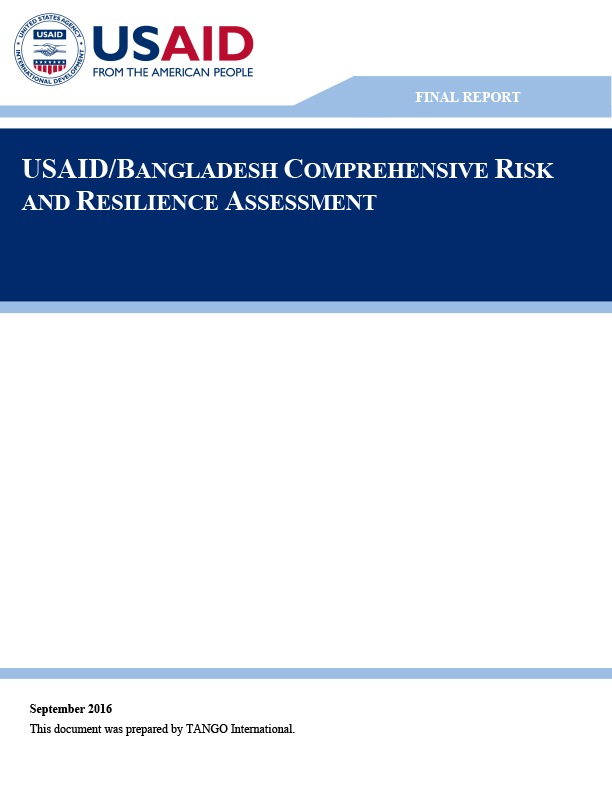The last two decades in Bangladesh have seen progress in poverty reduction. Individual projects have demonstrated positive results in core areas of development in the country such as agriculture, health, and emergency planning. However, these positive outcomes have been insufficient in terms of geographic coverage, impact on different economic groups, effects on men versus women, and effects on different vulnerable groups. Moreover, the sustainability of impacts is continually threatened given Bangladesh’s increasingly complex risk environment. Population growth, climate change, fluctuating global markets, political instability, inadequate governance mechanisms and human resource capacity to manage these risks are major challenges and merit a reexamination of current development strategies. Given Bangladesh’s topography, long and complex coastline, high population, and increasing urbanization, of particular concern are climate projections of more frequent and intense drought, rainfall, sea-level rise, and cyclones over at least the next 20 years. These recurring shocks and stresses, already a substantial part of Bangladesh’s risk profile, will demand significant resilience from Bangladeshi households, communities, and systems to prevent declines in development outcomes such as backsliding into poverty. USAID defines resilience as, “The ability of people, households, communities, countries, and systems to mitigate, adapt to, and recover from shocks and stresses in a manner that reduces chronic vulnerability and facilitates inclusive growth.”
This risk and resilience capacity assessment seeks to inform the USAID Bangladesh Country Development and Cooperation Strategy, future program design, and current program implementation. The intended audience is USAID Bangladesh, its partners, and other stakeholders. Using a resilience framework, the assessment aims to provide a comprehensive understanding of Bangladesh’s complex risk environment and the capacities of people, households, and communities to mitigate, adapt to, and recover from the shocks and stresses they face. This approach assesses contextual factors such as social, political, ecological, and economic systems and identifies vulnerabilities in the local context. The assessment draws on literature provided by USAID; qualitative risk and resilience capacities data and narrative from the Food for Peace endline surveys; assessments and evaluations pertaining to risk and resilience in the Feed the Future (FTF) Zone of Influence (ZOI); IFPRI data on movements into and out of poverty; a study by the Overseas Development Institute on sustainable poverty escapes and backsliding in Bangladesh; maps developed by GeoCenter on the impacts of specific shocks and stresses; and other relevant reports and papers identified in online searches. The report covers areas considered most vulnerable to prevalent shocks and stresses, including but not limited to the FTF ZOI in the Khulna and Barisal divisions in southwest Bangladesh.
The main limitation to this review is the scope of academic and grey literature that is written from a resilience perspective in the Bangladesh context. There is a particular gap in terms of resilience-oriented impact evaluations of development projects. To mitigate this challenge, we have brought in more recent analyses conducted using resilience measurement methodology on existing data from select USAID-supported projects.
Download the full report (PDF, 1.76 MB)








Comment
Make a general inquiry or suggest an improvement.